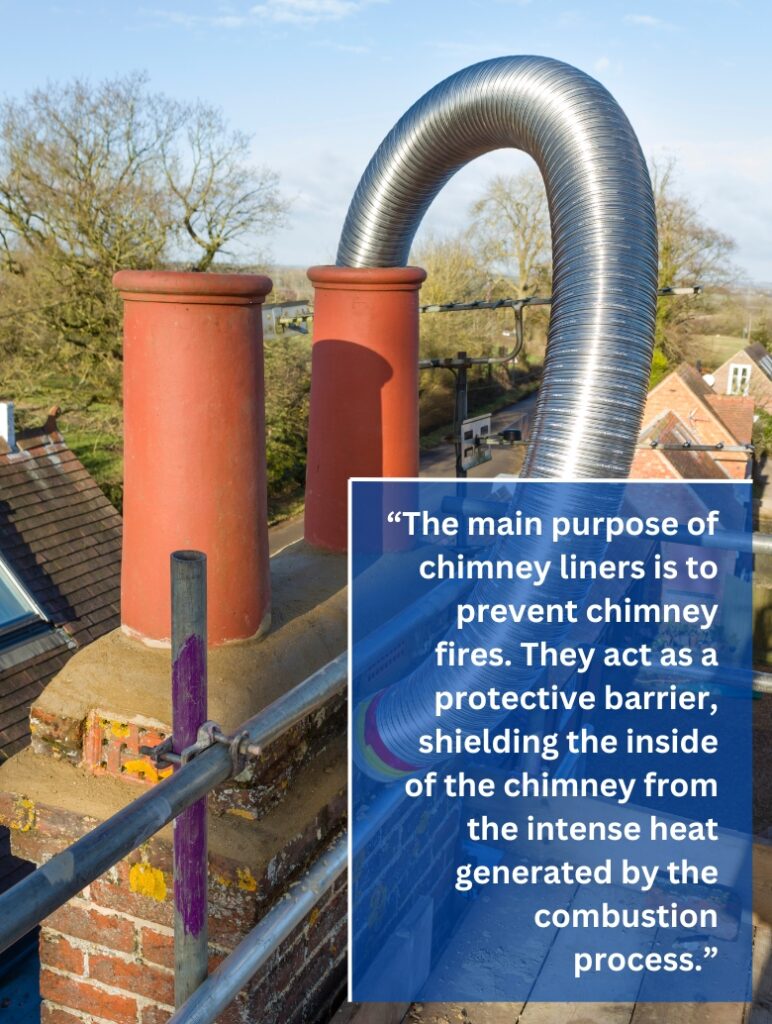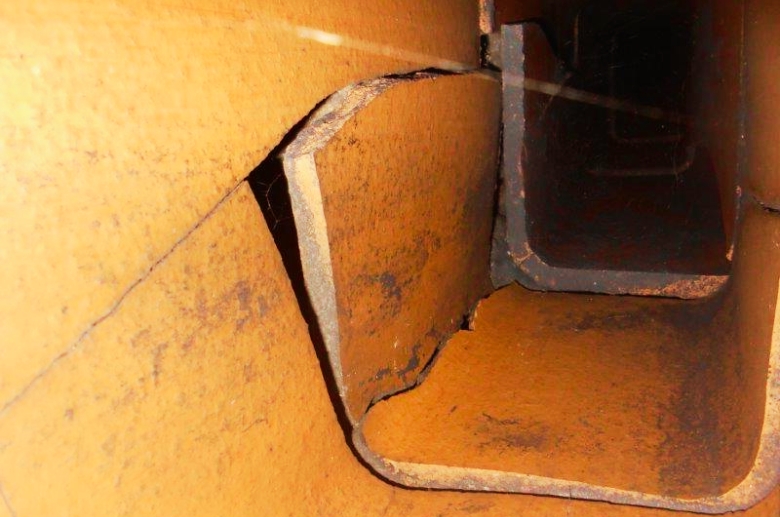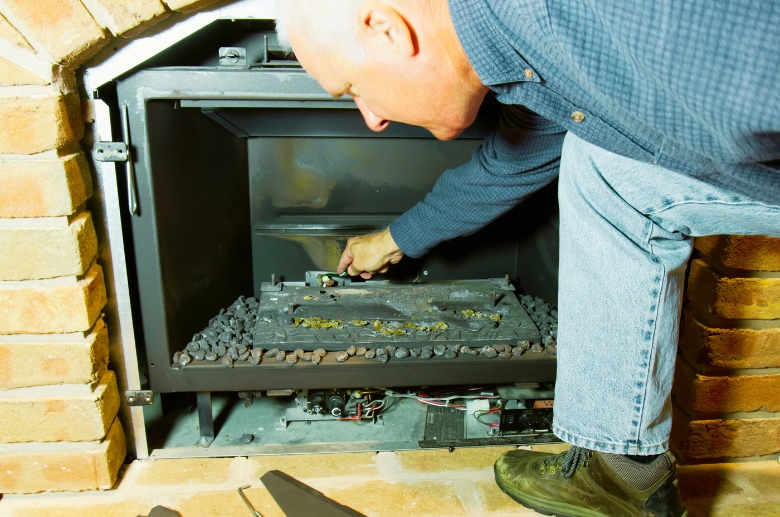Every homeowner’s worst nightmare is the thought of their cherished house going up in flames. While there are various causes of house fires, chimney fires are a particularly alarming and potentially devastating threat.
Did you know that approximately 25,000 home fires in the United States yearly stem from inadequate chimney maintenance?
But before you lose sleep over this terrifying scenario, there’s a vital question we need to address: Do chimney liners prevent chimney fires?
In this article, we’ll look into the facts and benefits of chimney liners to help you safeguard your home and enjoy those cozy fires worry-free. Let’s explore how chimney liners may be the key to keeping your home safe and burning fires bright.
Do Chimney Liners Prevent Chimney Fires?

The main purpose of chimney liners is to prevent chimney fires. They act as a protective barrier, shielding the inside of the chimney from the intense heat generated by the combustion process.
Without a chimney liner, the heat can transfer directly to the chimney walls, increasing the risk of dangerous creosote buildup. This substance can build up inside chimney walls, posing significant hazards. Accumulated creosote creates dangerous conditions, potentially leading to catastrophic fires in chimneys.
A properly installed and well-maintained chimney liner can help improve the overall efficiency of the chimney, allowing for better airflow and reducing the chances of blockages that can contribute to the development of chimney fires.
Can You Have a Chimney Fire with a Liner?

While chimney liners play a crucial role in reducing the risk of chimney fires, it’s important to note that they are not a guarantee against such incidents. Several factors can compromise the efficiency of chimney liners. Some of these factors include:
- Liner Damage: Over time, liners can suffer damage from usage, extreme temperatures, or corrosive combustion byproducts. Cracks or holes in the liner lessen its ability to contain heat and sparks, reducing its safety.
Installation Issues: A poorly installed chimney liner can allow gaps or spaces between the liner and the inner walls. Such gaps can allow the buildup of flammable materials, including creosote. An improper fit can lead to inadequate ventilation. - Size Mismatch: If the chimney liner is not appropriately sized for the specific heating appliance, it can hinder proper ventilation and accumulate combustible material. This mismatch can dangerously overheat the chimney.
——
Do You Need to Hire Chimney & Fireplace Expert?
Get free quotes from qualified experts near you. No commitment required!
——
Common Mistakes Leading to Liner Failures
One of the leading causes of chimney liner failures stems from common mistakes that homeowners often make. Neglecting annual inspections and maintenance tops this list. Many homeowners underestimate the importance of routine checkups, allowing potential issues to go unnoticed until they escalate into major problems.
A key aspect of these inspections is identifying the signs of a chimney fire, which include unusual sounds, a strong, hot smell, and excess smoke. Recognizing these signs early can prevent a small issue from becoming a dangerous and costly disaster.
Additionally, using the wrong fuel type, such as treated wood, painted wood, or other materials that release toxic fumes when burned for the liner material, can spell disaster.
Using the right chimney liner material for the corresponding fuel type ensures optimal performance and safety of the heating system. For instance, when using a wood-burning stove, it is advisable to have a stainless steel chimney liner. This material is resistant to corrosion caused by the byproducts of wood combustion.
On the other hand, for gas appliances, aluminum or stainless steel liners are suitable due to their ability to withstand the corrosive elements present in gas emissions.
Another critical mistake is ignoring signs of wear and tear or damage. Even minor cracks or creosote buildup can compromise the liner’s integrity, making it more susceptible to damage and increasing the likelihood of a chimney fire. It’s crucial to promptly address any signs of wear to prevent more significant issues.
Different Liners, Different Risks
Not all chimney liners are created equal, and understanding the varying risk factors associated with different types is crucial for ensuring the safety of your home.

Traditionally, clay liners have been popular for their durability and affordability. However, clay liners are not impervious to damage, particularly when exposed to rapid temperature changes, which can cause cracking and deterioration over time.
This is because the expansion and contraction nature of clay can create internal pressures that the liner may not withstand over time, compromising its effectiveness in containing liquids or preventing seepage.
Shifting focus to metal liners, such as stainless steel or aluminum, offers increased protection against heat and corrosion, making them a more resilient option. Their flexibility also makes them suitable for various chimney shapes and sizes. Improper installation or choosing the wrong metal type can pose risks, like rusting or structural instability.
Conversely, cast-in-place liners, made of a lightweight cement-like material, offer excellent insulation and structural stability, minimizing the risk of creosote buildup and potential fire hazards. However, their installation process can be complex and costly, requiring professional expertise.
Therefore, consulting with a professional chimney team to assess the compatibility between the liner and the heating system is essential for mitigating potential hazards and ensuring the safety of your home.
The Impact of External Factors
Weather extremes, like severe cold or intense heat, pose challenges to chimney liner efficiency. In areas experiencing drastic temperature drops, the chimney’s expansion and contraction may stress the liner.
Consequently, this stress might lead to cracks or gaps, allowing flue gases to seep through chimney walls. In hot climates, continual exposure to elevated temperatures gradually degrades the liner, reducing its efficacy in heat and byproduct containment.
Additionally, structural issues in chimneys, such as mortar erosion or openings, can compromise the entire system’s integrity, including the liner. These defects may also form escape routes for dangerous gases and embers, elevating chimney fire risks.
Therefore, conducting regular inspections and maintenance is crucial to identify and rectify any structural concerns.
——
Do You Need to Hire Chimney & Fireplace Expert?
Get free quotes from qualified experts near you. No commitment required!
——
How Chimney Liners Prevent Fires
Chimney liners prevent fires by containing and directing the heat, gases, and creosote produced during combustion, reducing the risk of ignition in surrounding combustible materials.
They also create a smoother and insulated pathway, minimizing the accumulation of creosote and improving overall chimney safety.
Advantages of Having a Chimney Liner
Let’s explore some of the key benefits of having a chimney liner.
Improved Safety
Perhaps a chimney liner’s most critical advantage is its enhanced safety. By preventing the excessive buildup of creosote and containing the intense heat and sparks generated by a fire, chimney liners significantly reduce the risk of chimney fires.
Increased Efficiency
A well-installed chimney liner expedites the removal of combustion smoke, gases, and byproducts from your home, preventing the buildup of harmful substances and enhancing the efficiency of your heating system.
Compared to a chimney without a liner, efficiency improvements typically range from 10% to 20%, resulting in a more effective heat output and a cleaner burning process.
Protection of the Chimney Structure
Over time, the inner walls of a chimney can deteriorate due to the corrosive effects of combustion byproducts. A durable chimney liner acts as a protective barrier, safeguarding the chimney’s masonry from damage. It helps prevent the chimney structure’s degradation, extending its lifespan and reducing the need for costly repairs or reconstruction.
Installing a chimney liner is an investment in your home’s heating system’s long-term safety, efficiency, and structural integrity.
Signs that a Chimney Liner May Need to be Replaced
Over time, wear and tear can compromise the chimney liner’s integrity, necessitating timely intervention. Several key factors can indicate when it’s time to consider a replacement. Let’s look closer at the telltale indicators that suggest your chimney liner may need urgent attention.
Age of the Liner
As with any component of your home, chimney liners have a finite lifespan. The materials can deteriorate, especially if exposed to intense heat and corrosive substances. If your chimney liner is approaching or has exceeded its recommended lifespan (usually 15 to 20 years), consider a replacement to ensure continued safety and functionality.
Damage or Deterioration
Keep a vigilant eye for signs of damage or deterioration in your chimney liner. This can manifest as cracks, holes, or crumbling mortar. These issues can compromise the structural integrity of the liner, allowing dangerous gases, like carbon monoxide, to leak into your home.
Additionally, if you notice bits of tile or other liner materials in your fireplace, it might indicate that your chimney liner needs urgent attention.
Changes in Appliances or Fuel Type

Any modifications to your heating system, such as upgrading to a higher-efficiency furnace or converting from wood to gas, can impact the performance and longevity of the chimney liner.
For instance, the shift from a traditional wood-burning stove to a high-efficiency gas fireplace can alter the temperature and composition of the flue gases, potentially accelerating wear and tear on the liner. It is essential to evaluate and, if necessary, replace the chimney liner when such modifications occur to ensure optimal safety and efficiency.
If you’ve switched from one type of heating appliance or fuel to another, ensure your chimney liner is compatible and can adequately withstand the new conditions. Failure to address this may result in inefficient operation, increased risk of chimney fires, and potential health hazards for you and your family.
Promptly addressing these signs can help you maintain the safety and efficiency of your chimney system, ensuring that it continues to function optimally for years to come. Annual inspections and cleaning by a certified professional chimney company are also essential to catch potential issues early on and avoid costly repairs or replacements.
Conclusion
We’ve explored how chimney liners protect your home by containing heat, redirecting harmful gases, and preventing the degradation of your chimney structure. Neglecting the condition of your chimney liner can have serious consequences.
Regular inspections and maintenance will preserve your liner’s integrity and prevent potential disasters. We strongly recommend that you schedule professional chimney inspections and service regularly.
Contact us now for certified chimney experts. Ensure the safety of your home with professional assessments, repairs, and replacements. Let us keep your chimney a source of comfort and joy, not concern.






